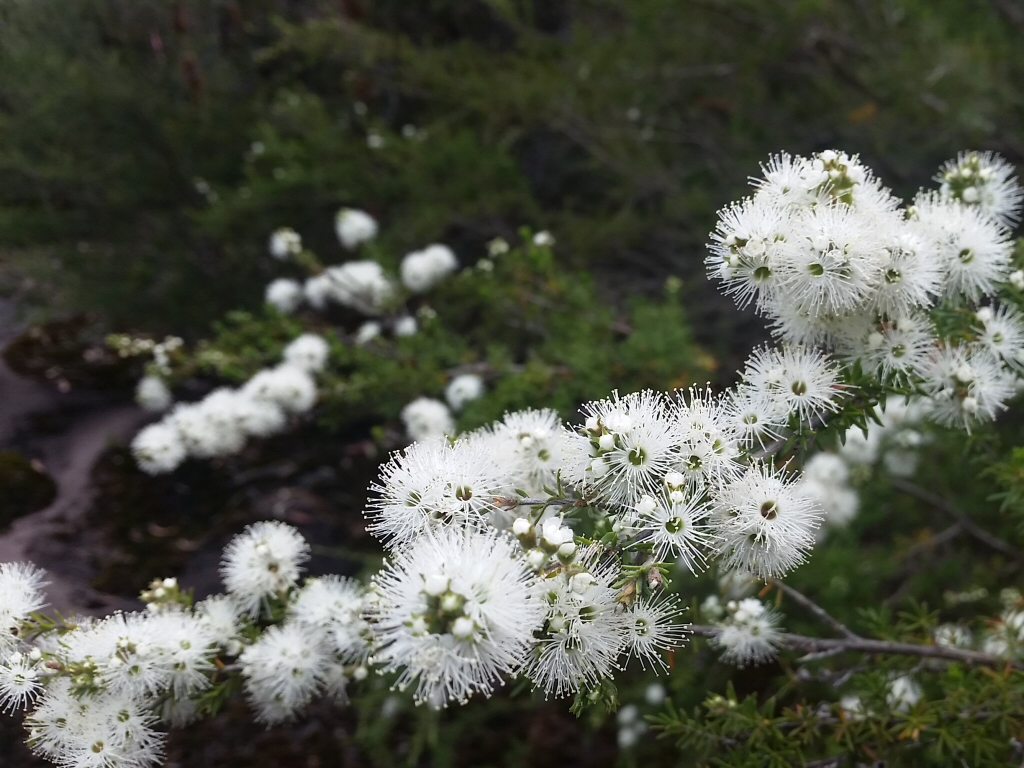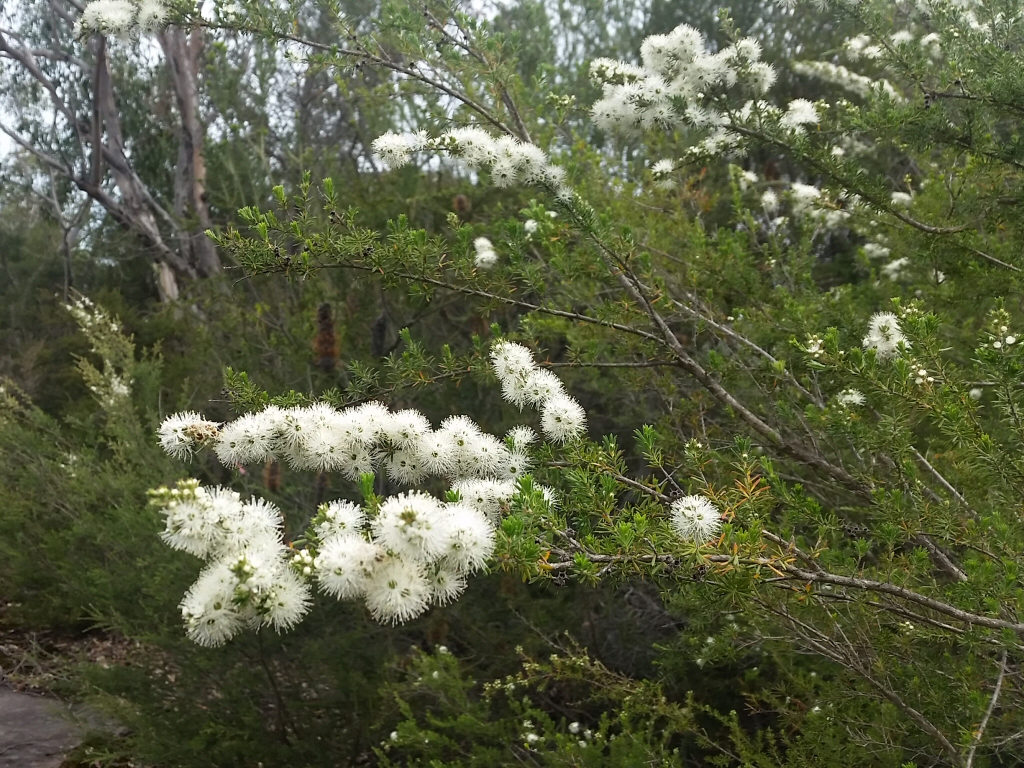An attractive medium sized shrub, it has fine leaves and abundant flowering in spring. Each flower is relatively small, consisting of bundles of stamens, giving a delicate look. They are white to cream, borne in profusion, and are attractive to bees and small nectar loving birds and marsupials. It occurs in the wild from northern NSW down to Tasmania, near the coast. It grows from 1 to 5 metres tall, and 1 to 3 metres wide, and is good for screening, informal hedging and for low maintenance areas. It responds well to pruning, which can be done after flowering and in autumn. It is rarely troubled by pests or disease, apart from webbing caterpillars, which can be controlled by picking them off and binning.
Kunzea ambigua – Tick Bush

Family : Myrtaceae
Cultivar Name:
Plant Type : Small shrub, Large shrub
Width : 3
Flowering Time : Spring
Soil Type : Sandy, Loamy, Sandy loam, Clay loam, Poor soil
Climate Zone : Warm temperate, Cool temperate, Mediterranean, Cool
Growth Habit : Evergreen, Spreading
Soil Moisture : Dry, Well-drained, Moist moderate drainage
Special Uses : Fragrant oils, Bonsai, Erosion control, Honey producing plant, Bird nesting plant, Fast growing, Playground friendly
Scientific Name: Kunzea ambigua
Common Name : Tick Bush
Height : 5
Flower Color : White, Cream
pH Level : Acid, Neutral
Plant Environment : Low maintenance garden, Flower garden, Coastal garden, Drought resistant
Light : Sunny, Light shade, Half shade
Lifespan : Perennial
Frost Tolerance : Tolerates heavy frost, Tolerates light frost
Attracts Wildlife : Bees, Nectar eating birds, Butterflies, Other insects

